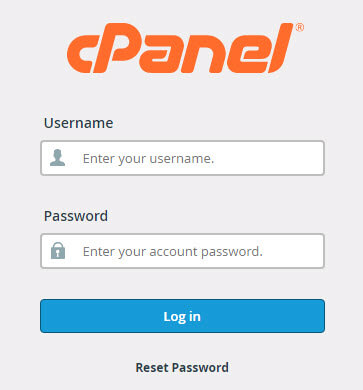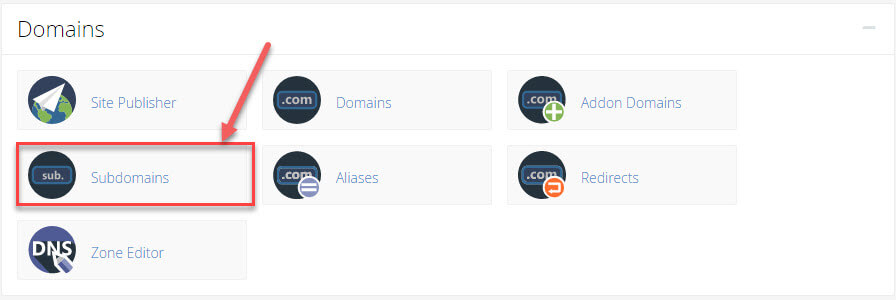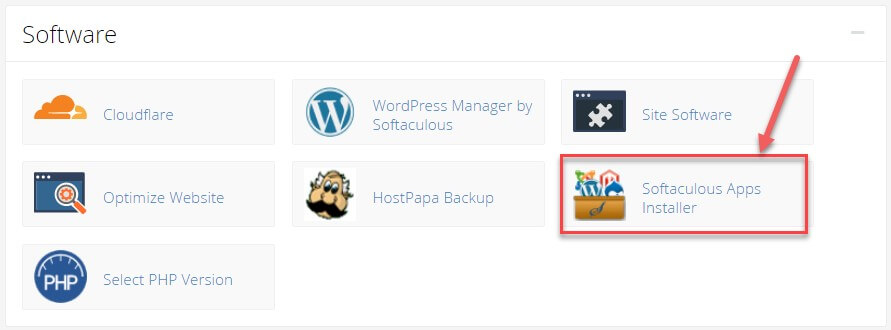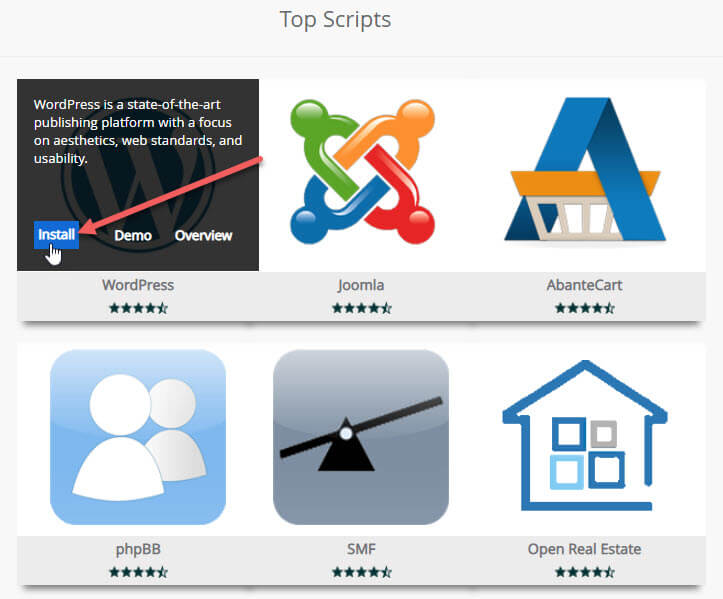idea of creating a WordPress site on a subdomain different from the primary domain on which your current site runs may seem useful in many cases to create two different sites under the same domain. In this article, we will explain to you how to install WordPress on a subdomain through the cPanel hosting control panel.
Subdomain concept
Before we explain the meaning of a domain or subdomain, we will first explain to you the meaning of the word domain or domain.
The domain is the address that you type in the browser address bar to access the website you want to browse. Just as every home has its own unique address through which you can access it, the same is true for websites. Each site has its own unique domain that enables you to access the site and browse its contents.
A domain is the part of a URL that points to the address of a website on the Internet.
For example, the domain name for our WordPress site is wpar and is written in the form “https://www.wpar.net/” and this domain is the root domain or the main domain of the site (Primary domain). To see more information about domains, you can see the article Next: What is a domain? A comprehensive explanation for beginners
The subdomain is part of the primary domain of the website, but it may include content that differs significantly from the content of the site that can be accessed by going to the primary domain.
The subdomain is expressed by writing the subname before the root domain name. For example, the following image shows the subdomain (https://mail.google.com/) of the Gmail email service affiliated with Google, which is located on the main domain (https:/). /www.google.com/)

To illustrate the idea of a subdomain, we can give the following example: Suppose that the primary domain associated with web hosting is a box with a number of smaller boxes inside it, in addition to many other purposes, then the subdomain can be likened to one of the small boxes inside the big box. The contents of the small box may be similar to, but also different from, the items in the large box outside of the small boxes.
The subdomain is expressed by the primary domain with the name of the subdomain added before it, and a period (.) between them. Below are some examples of primary and subdomains:
- WordPress.com is a primary domain, while support.WordPress.com and es.WordPress.com are subdomains.
- wpar.net is a primary domain, while blog.wpar.net and store.wpar.net are subdomains.
It is possible to create more than one subdomain for the same primary domain as long as the hosting allows it. Any short text consisting of English letters and numbers can be used for the subdomain, but two subdomains belonging to the same main domain cannot have the same text.
Subdomains can contain something other than what the main domain contains, as we mentioned previously, and search engines recognize them as separate entities from the main domain. Your blog, which operates under the subdomain “blog.example.net,” and your website, which operates under the main domain “example.net.” “They are two different things for Google and other search engines.
The difference between a subdomain and a subdirectory
A subdomain divides your website, so you can create a new, independent site with content different from the content on your site on the main domain. The subdomain is expressed, as we mentioned, by writing the subname preceded by a period. Before the main domain name, for example (https://blogs.wordpress-1409476-5242918.cloudwaysapps.com/).
A subfolder is a path within your site and is used when you want to create pages of different types within a specific website. In other words, it is considered part of the hierarchy of your site and not an independent site. It is expressed by writing the name of the subfolder after the main domain, preceded by a slash, for example (https://www.wordpress-1409476-5242918.cloudwaysapps.com/category/websites-and-blogs/).
From an SEO perspective, subdomains are treated as separate sites from the site on the parent domain, while subfolders are treated as content located on the same site as the parent domain.
Needs to install WordPress on a subdomain
Installing WordPress on a subdomain of your site’s primary domain can have many benefits and advantages for you, and these benefits and advantages can include, but are not limited to:
Dividing parts of the site to organize it
If you run a business website with an educational section and a blog, you may prefer to keep the educational section of the site (or blog) separate from the main site that includes the products, their descriptions, and the ability to purchase them.
You may want to separate the educational section and the blog from the rest of the site because their design will be different from the design of the main site, or because you want search engines to treat the educational section as a separate site, because you want to target specific keywords in it that are different from those you target on the main site, or for another reason. .
Create another website
You can create a new WordPress site on the subdomain that is completely different from the site on the primary domain, and this may be useful – for example – when you are interested in creating two sites for transmitting scientific news, where one of the two sites will be dedicated to transmitting news in simple children’s language, and the second will be dedicated to transmitting news in a more complex language. , but also more specific and deeper.
Create a multilingual website
It is often necessary to provide your site in multiple languages, especially if it targets geographic areas where more than one language is spoken. You can use subdomains to create a multilingual website, as the subdomains contain elements similar to the elements that the site contains on the main domain, but in different languages indicated by the subdomain name.
Installing WordPress on a subdomain
To install WordPress on a subdomain, you must first create a new subdomain through the hosting control panel, then you must install the content management software on that domain, which means that the process of installing WordPress on a subdomain is through creating the subdomain, then installing WordPress is on this subdomain.
Here we will explain these two steps easily, and in the explanation we will use the cPanel hosting control panel, as it is one of the most popular hosting control panels.
First: Create a new subdomain through the cPanel hosting control panel
To create a subdomain using cPanel, follow these steps:
- Log in to cPanel using your administrator credentials.

2. Scroll to the “ Domains ” section, then click on the “ Subdomains ” icon, to go to the Subdomains Management section.

3. On the page that opens, you will find a section entitled “ Create a Subdomain ”. This section is dedicated to creating a new subdomain. Enter the name of the new subdomain you want to create, then click the “ Create ” button.

A new subdomain with the name you specified will be created immediately after you click the “ Create ” button, and you will be able to install WordPress on it using the Softaculous Apps Installer.
Second: Install WordPress on the subdomain using Softaculous
After creating a subdomain, you will only have to install WordPress on it to be able to use it as a new website. To do this, follow these five steps:
- On the main page containing cPanel tools, find the “Software” section, then click on the “Softaculous Apps Installer” icon within it.

2. The Softaculous Apps Installer will display several scripts. Place your mouse on “WordPress,” then click “Install” that appears above the WordPress icon.

3. A page will appear asking you to enter some data. Choose the version of WordPress you want to install, then select the protocol you want from the list of protocols. If you have an SSL certificate, choose “https://” or “https://www.” If you do not have an SSL certificate, choose “http://” or “http://www.” After that, choose the subdomain that you created in the first stage, and leave the “In Directory” box empty.

4. Complete entering the other required data, including the site name, site description, administrator username, password, and administrator email, then choose the site language you want, choose some add-ons to install directly, then click the “Install” button . To install WordPress on the subdomain yourself.

5. After clicking on the “ Install ” button and the WordPress installation is complete, go to the subdomain, and you will find that WordPress has already been installed on it.
Now that you know the steps to install WordPress on a subdomain of your site’s main domain, some questions may come to your mind about this topic, so let us answer them as follows:
Is it possible to create a subdomain for a subdomain?
Answer: Yes, it is possible. You can create several levels of subdomains for the same primary hosting domain, but the hosting company can restrict this.
Which is better for installing WordPress for search engines, subdomains or subfolders?
Answer: Experts say that the difference between installing WordPress on a subdomain and installing it on a subfolder is non-existent or very small.
How many subdomains can be created for one primary domain?
Answer: Theoretically, there is no limit to the number of subdomains that you can create, but it depends on many factors, including the restrictions of the hosting plan that you use, and the maximum limit of your available resources, that is, in practice: there is no specific limit for all cases, and there are different limits for each. Case by case.
Is it possible to install WordPress on a subdomain for the purpose of development, and after the development is completed, move the site to the primary domain?
Answer: Yes. You can use a subdomain to create a staging environment for development, and after completing the development process, you can move the site from the subdomain to the primary domain.
Is it possible to store the data of the WordPress site installed on the subdomain on a different host than the one on which the site installed on the primary domain is stored?
Answer: Yes. It is possible that a site that can be accessed by going to a subdomain will be stored on a different hosting than the primary domain. To do this, you need to point the subdomain to the IP address of the host on which the WordPress (sub)site is stored.
In conclusion, we point out that there is another method that can be used to install WordPress on a subdomain, but this method, which relies on the hosting control panel, is the easiest, as it only requires – as you have seen – the implementation of 8 simple application steps divided into two stages
































Leave a Reply